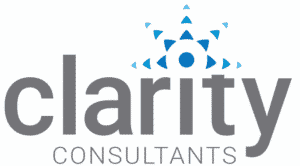 Being flexible and adaptive in today’s increasingly complex world is a necessity. In order to stay competitive, organizations have to be like trees: firmly rooted, but able to move enough with the wind so the branches don’t snap.
But it’s not such a simple task. The most optimistic forecasts indicate that only 25% of major change initiatives are successful over the long term. Other research grimly suggests that 80-90% of those initiatives fail or even make the organization worse off than it was to begin with. And it’s not for lack of trying—the road to failed change initiatives is almost always paved with good intentions.
Being flexible and adaptive in today’s increasingly complex world is a necessity. In order to stay competitive, organizations have to be like trees: firmly rooted, but able to move enough with the wind so the branches don’t snap.
But it’s not such a simple task. The most optimistic forecasts indicate that only 25% of major change initiatives are successful over the long term. Other research grimly suggests that 80-90% of those initiatives fail or even make the organization worse off than it was to begin with. And it’s not for lack of trying—the road to failed change initiatives is almost always paved with good intentions.
What is organizational change?
Organizational change takes many forms, including increasing employee learning, switching reporting lines, implementing new systems, merging with other companies, or relocating. It may be episodic and abrupt, or continuous and emergent over time. Developmental change, for example, involves a constant process of scanning for new and better ways to function, which are implemented over time in an effort to avoid sudden large-scale shifts. Organizational change is not always voluntary either—sometimes the emergence of competitors or new technologies forces the hand of leaders who would have rather avoided a large-scale shake-up in the first place.Why do change initiatives often fail?
There are plenty of reasons why attempts to curate major changes often fall flat—minimal employee buy-in, lack of resources, unarticulated vision, unrealistic goals, to name a few—but they all boil down to one point:Leadership has failed.
Leaders aren’t simply the commanding voices behind a screen: their behaviors and choices have a direct impact on the success or failure of company initiatives. They have the opportunity to model the exact outcome they’d like to see happen. If they fail to do so, they can drive an organization into the ground. If they succeed, it’s like magic.A three-part model for successful change
Lewin’s classic model from 1951 breaks the change process into three steps: unfreezing (preparing for change), movement (changing), and re-freezing (anchoring the new paradigm). While more extensive models have been developed since then, Lewin’s is a good high-level picture that can be used to organize change of any scale.Unfreezing (preparing for change)
This phase can be thought of as the WHY? stage: Why is change necessary? Why can’t the organization continue as it is? Leaders must:- Fully articulate why change is necessary
- Seek a diversity of perspectives to ensure everyone is heard
- Share their vision in a compelling way
- Be comfortable with uncertainty (unfreezing is uncomfortable and sometimes frightening)
Movement (change implementation)
This is the HOW? stage. How can your organization move into the next stage? How is this change going to be implemented? At this phase, leaders should be prepared to:- Get everyone involved, from the lowest-ranking employee to the most high-level stakeholder
- Be actively communicative about every step of the process
- Reward movement by early adopters
- Offer extra motivation for company laggards who are resistant to change
Re-freezing (change follow-up)
The final stage asks WHAT NOW? What happens after the new system is fully implemented, the training is complete, or the first day begins after the merger is complete? Change is rarely something that can be achieved and then dropped; rather, it is a continuous process of reinforcing new habits and methods to ensure success. Leaders aren’t out of the woods yet. They must continue to:- Create and reinforce a sense of stability
- Offer ongoing support and training
- Conduct a 360 evaluation to minimize subjectivity when assessing whether the change process could be deemed successful
For more on project management and preparing for organizational change.
